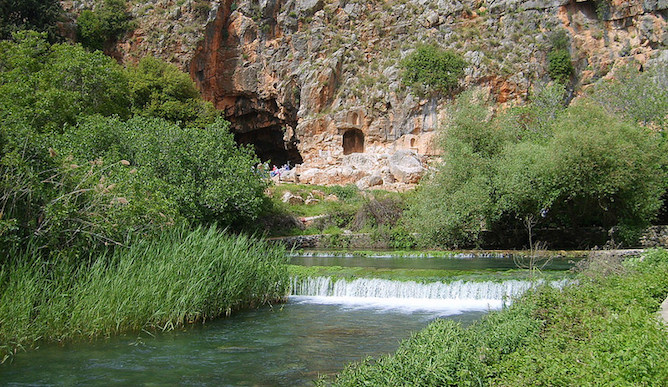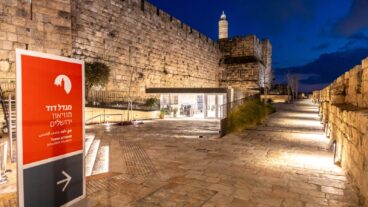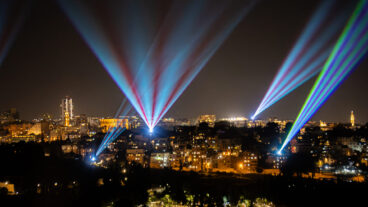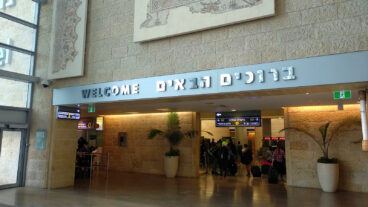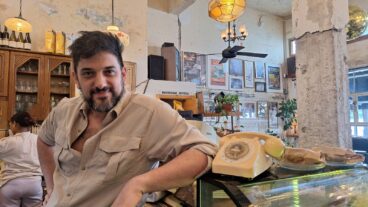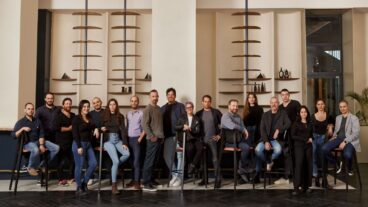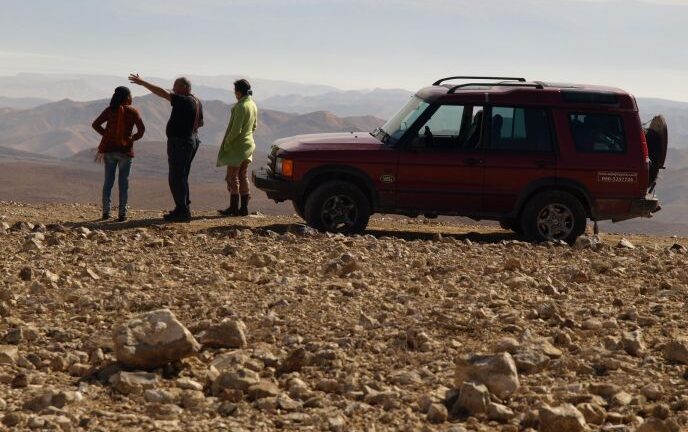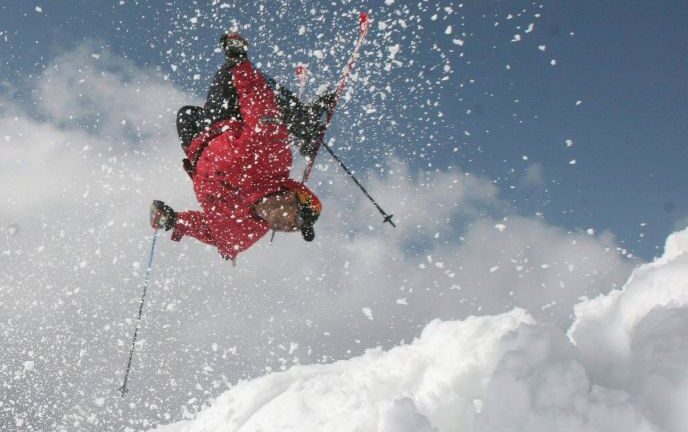The first thing you need to know about the Hermon-Banias Nature Reserve in the Golan Heights is that you will be tempted to dive into the crystal rushing springs or at least stick your feet in the cool waters.
However, access to the Hermon Stream has been strictly forbidden there since the early 1990s, in order to preserve the delicate ecology. That comes as a surprise to people who visited the site in the years after Israel took control of it from Syria in 1967, says licensed tour guide Josh Even-Chen.
“Often when I take repeat visitors there, they expect to go swimming, which you could do in the 1970s and 1980s,” says Even-Chen, who has been to Banias (also spelled “Banyas”) multiple times.
And you will want to go back more than once, even if you can’t dip your toe in the stream. Banias is one of the most beautiful – and therefore one of the most-visited – of Israel’s 14 nature reserves.
Named for the god Pan
The Banias Spring comes out of the foot of Mount Hermon and flows through a canyon leading to the 10-meter (30-foot) Banias Waterfall (Mapal in Hebrew), the longest such cascade in Israel. The Hermon Stream meets the Dan River farther along, and together they feed the Jordan River.
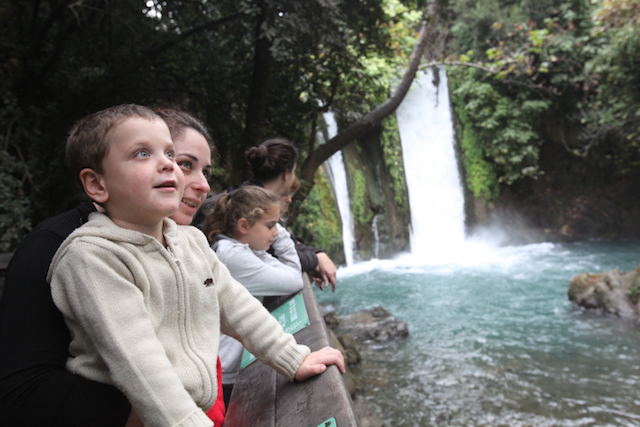
In ancient times, the spring gushed from a cave in the limestone bedrock down into the valley and into the Hula marshes. You can still see the cave, though the water in modern times seeps from the bedrock below it.
The site was originally named “Panias” after the Greek god Pan. There are remains of a temple, courtyards, a grotto and niches for rituals dedicated to the worship of Pan, dating to the beginning of the Common Era.
Since there is no “p” sound in Arabic and the region was long under Syrian rule, the village that grew up around the spring came to be called Banias.
“The time period most famous here is the Roman one, because it was the most prosperous,” Even-Chen tells ISRAEL21c. “On the site was a very large complex of buildings focused on the worship of the god Pan of the wild. From the god Pan, we get the word ‘panic,’ referring to something popping up in the wild.”
The ‘nature’ side of the reserve
You can enter Banias from two separate locations, each with its own ticket booth and each popular for different groups.
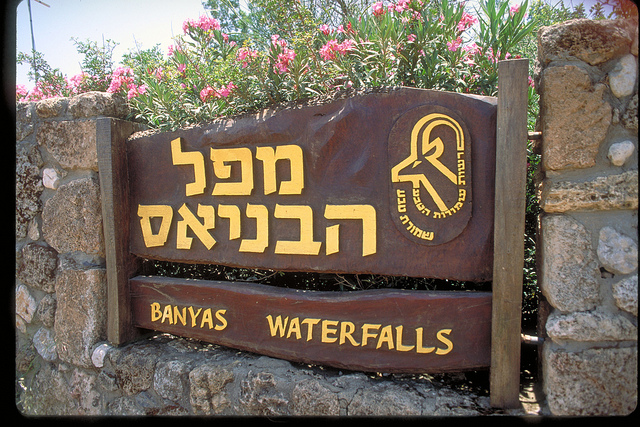
If the waterfall is your main destination, Even-Chen suggests entering the reserve from Kiryat Shmona on the west side, known as the Falls entrance.
“There are multiple trails through the entire park, and the shortest takes 10 or 15 minutes in each direction, leading to the impressive waterfall,” he says. “It’s flowing all year round, but there is more water in the winter since it’s fed from snow melting on Mount Hermon.”
A few years ago, the Israeli Nature and Parks Authority built a suspended circular walkway across the gorge. “You’re walking on the vertical cliff halfway from the top of the cliff and riverbed, and it’s really cool,” says Even-Chen. “That has opened a view of the Banias that was never visible before.”
The walkway takes just over an hour to complete. “I highly recommended it for families, but you can’t take a stroller so put your toddler in a back carrier,” he recommends.
Another trail runs along the riverbed from one side of the park to the other. You’ll need two cars to accomplish this hike unless you want to walk two hours back to the parking lot where you started.
“En route to the waterfall, you get to see — but not wade into — concrete pools built in the river by Syrian officers in the 1960s,” says Even-Chen. “The river at that point is fed by natural springs whose temperature is warmer than the frigid waters of the river bed, and it was a great place to swim.”
A bit of Christian history
Interested in the religious and historic side of Banias? Travel half a kilometer down the road to the opposite side of the highway to the Springs entrance. If you have a ticket from the Falls side, present it here.
The Springs side has ruins from the Roman period, when the village was called Caesarea Philippi after King Herod’s son Philip, who inherited the area and made it his capital. The palace of Agrippa the Second, grandson of Herod, is among the relics.
According to the Gospels, it was in the Banias that the disciple Simon informed Jesus that people believed Jesus to be the messiah. In response, Jesus renamed Simon “Peter,” which means “rock” in Greek — the rock upon which his church would be founded.
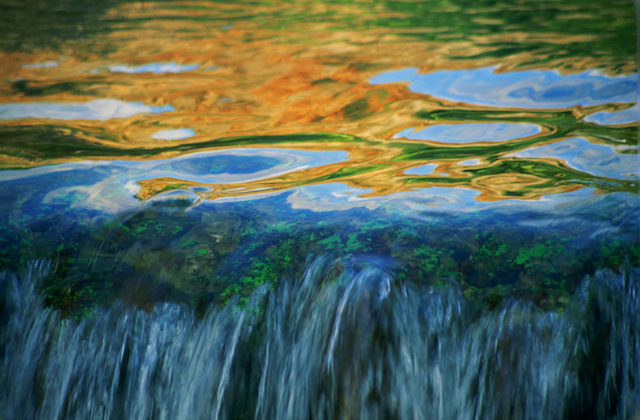
“For Christians, especially Catholics, Peter was the first pope, so for pilgrims the site helps them understand the environment in which this pivotal scene takes place,” says Even-Chen.
“Caesarea Philippi remained important during the Christian Byzantine period. It was later conquered by the Muslims and then the Crusaders, then went back under Islamic rule and fell from its heyday.”
The Nimrod Fortress National Park is nearby, dating to the time of the Crusades. The fortress was actually built by the Crusaders’ Islamic enemies. You can buy a combination ticket for the Banias and Nimrod Fortress.
“The importance of the area is that it’s a major route between Damascus and the Lebanese coast, so if you control that area it gives you the high ground,” Even-Chen explains.
Also within a short distance is the Tel Dan Nature Reserve. Here there is a family-friendly wading pool.
Even-Chen recommends stopping for Druze pita bread made alongside the road on either side of the Banias, drizzled with honey or labane. And for adventurous travelers, the Hermon area offers ski slopes in season plus opportunities for off-road jeeping and rappelling.
The Banias is open from 8-5 Sunday to Thursday and Saturday (till 4 on Fridays and holiday eves) from April to September. From October to March, it’s open from 8-4 (till 3 on Fridays and holiday eves). Visitors may enter up to an hour before closing time.
For further information, call 972-4-695-0272 (Falls ticket booth) or 972-4-690-2577 (Springs ticket booth).




